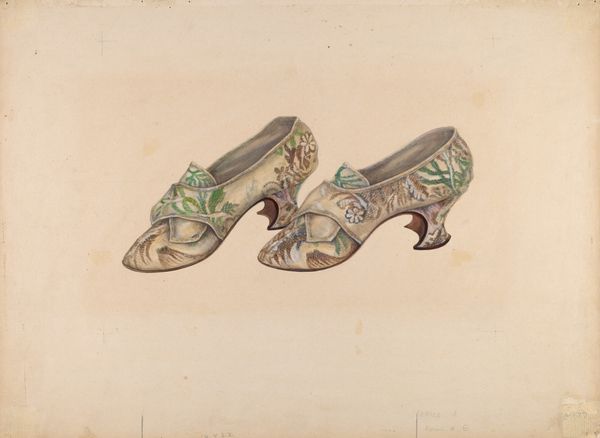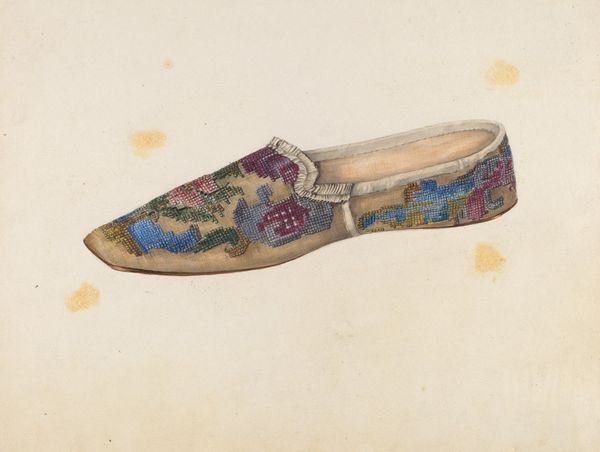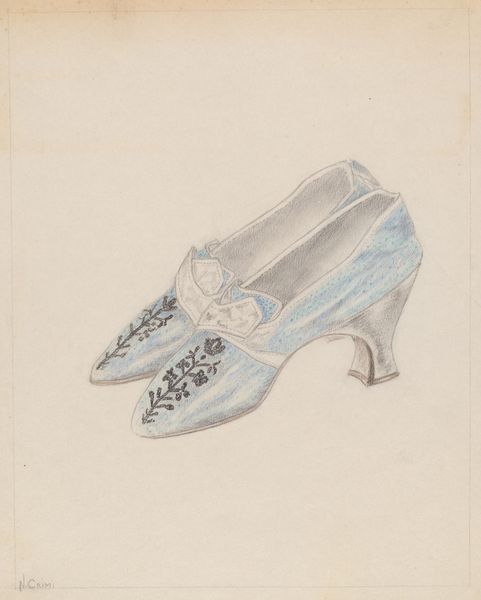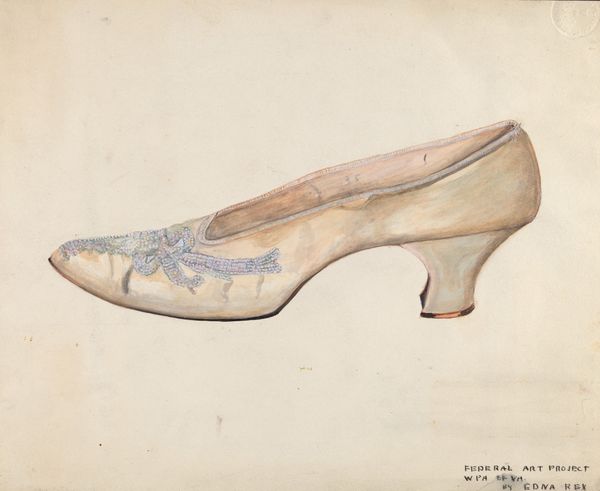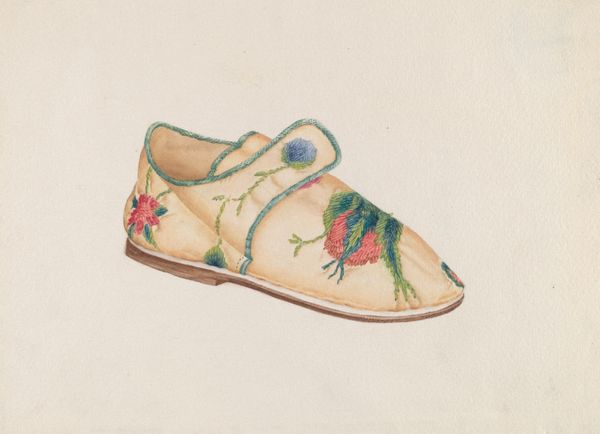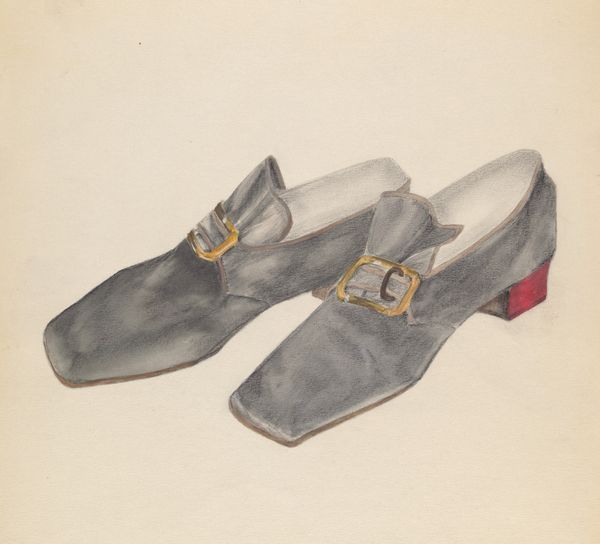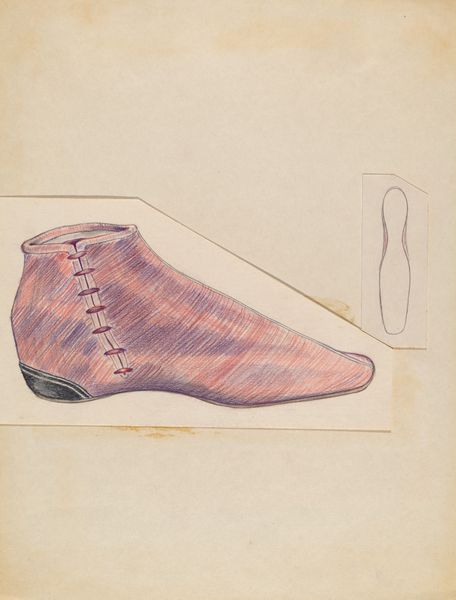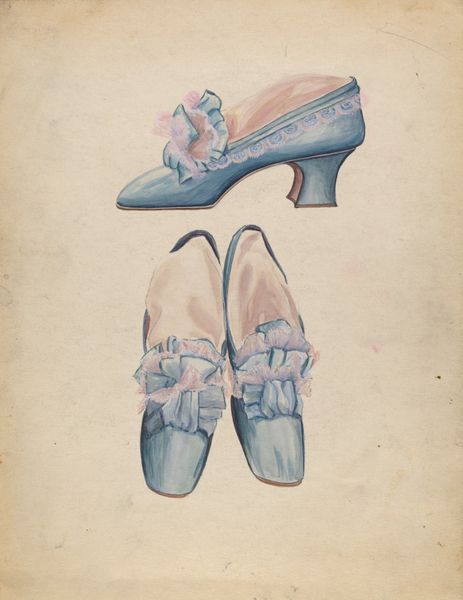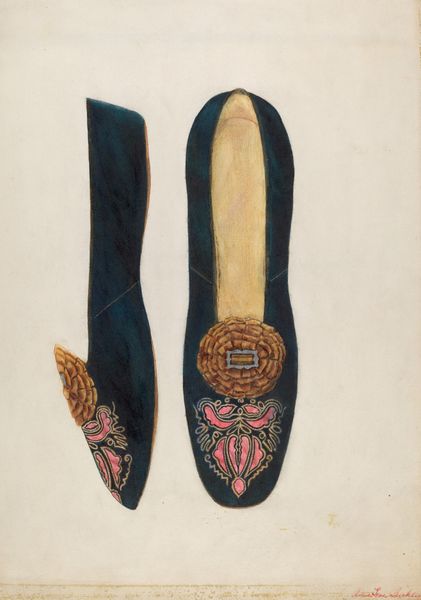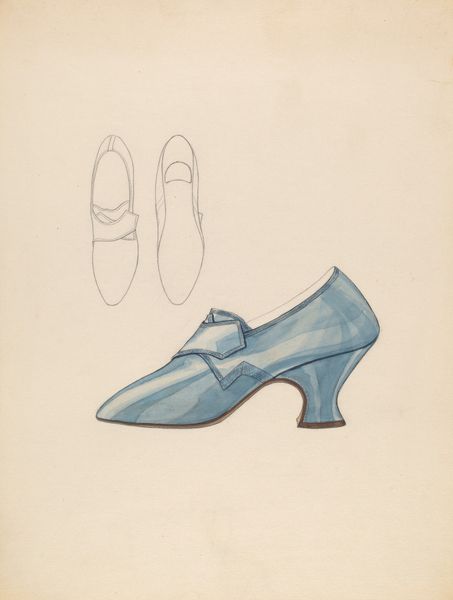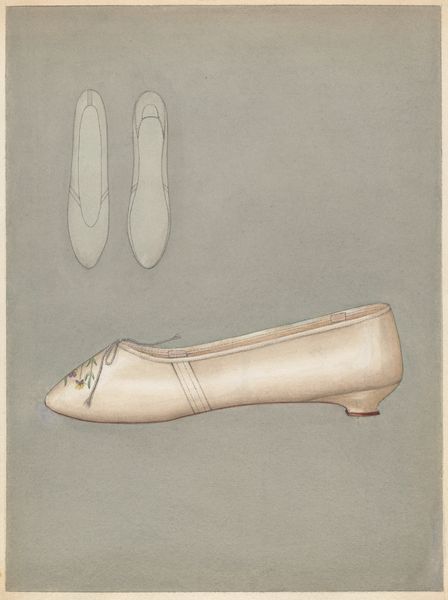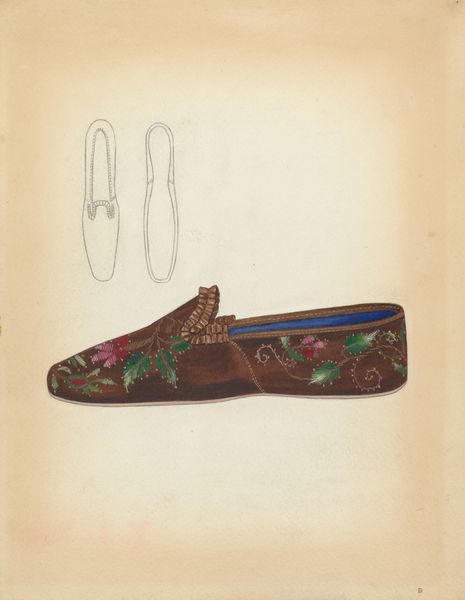
drawing, watercolor
#
drawing
#
figuration
#
watercolor
#
watercolour illustration
#
academic-art
Dimensions: overall: 30.6 x 40.8 cm (12 1/16 x 16 1/16 in.)
Copyright: National Gallery of Art: CC0 1.0
Curator: Stella Mosher, around 1937, rendered this delightful watercolor and drawing titled "Woman's Shoes." Editor: My first impression is of something fragile and ornate, like a memory pressed between the pages of a very old book. There’s an intimacy about it. Curator: The material's qualities are really foregrounded here. Note how Mosher coaxes such delicate textures from watercolor, the suggestion of the nap on the fabric, the way the light seems to glow from within. It verges on trompe l'oeil, despite its obvious two-dimensionality. Editor: It’s so meticulously rendered, it's almost documentary. We see these individual flowers, likely embroidered, on a pale ground of silk, probably dyed that distinctive, muted yellow fashionable in the '30s. I wonder, were these a particular woman's prized possessions? The representation does not provide us many elements of analysis. Curator: I am curious about how she decided on the light and dark play, not entirely realistic. Take note of the interior, only the edge is shaded; her intention is clearly descriptive as well as artistic. What sort of effect do you find from her specific color choice? Editor: I imagine that the color itself must be historically linked. Given the style of shoe, there may be socio-economic contexts to consider—perhaps related to leisure, craft, or the female image during the 1930's. A link in the relationship of woman, leisure and luxury. Curator: Very likely! Consider the artist's approach: is it meant to convey some personal expression? Perhaps, Mosher intended something different, beyond pure documentation. It’s the subtle gradations that lead me there; an overall visual effect and emotion. Editor: Perhaps. What is striking is how that the materiality is so well evoked; yet, to truly analyze this image, it needs to engage with socio-political context. Only through a lens like that, does one arrive at comprehensive understanding of what Mosher truly intended. Curator: Maybe a comprehensive view is not always accessible? However, by concentrating on the artful construction of the drawing, it’s possible to experience a sort of pure aesthetic appreciation. Editor: Fair point. Ultimately, it serves as a visual window into understanding tastes, and attitudes of an age long since gone, no?
Comments
No comments
Be the first to comment and join the conversation on the ultimate creative platform.
